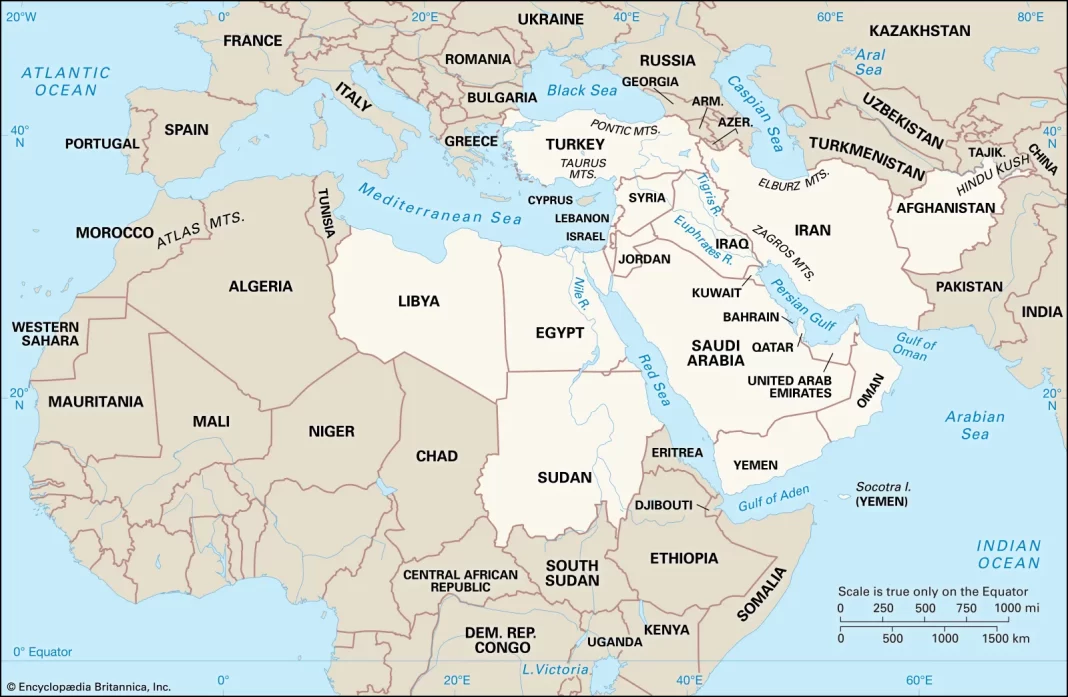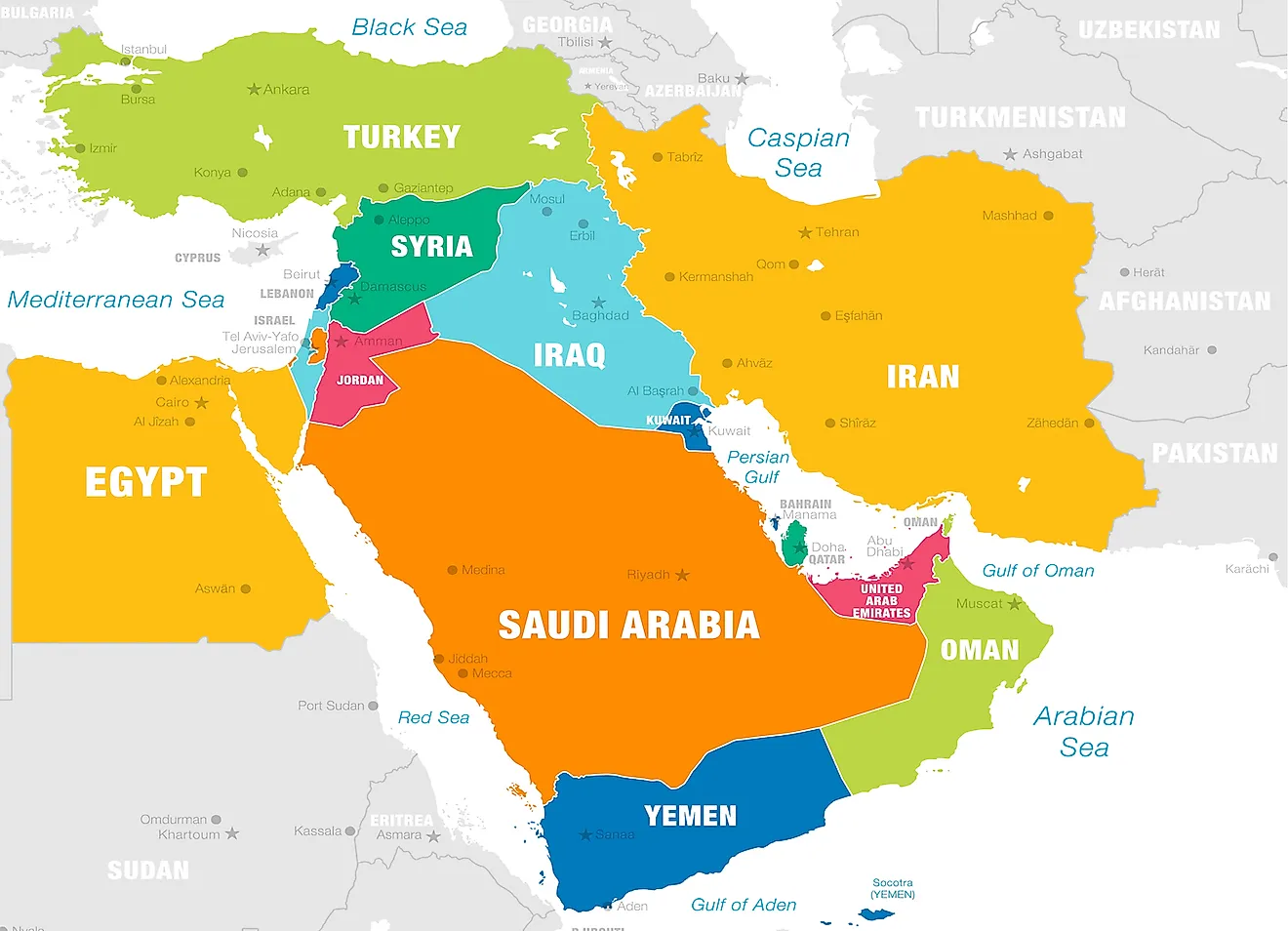The Middle East is a culturally and geographically diverse region located at the crossroads of Europe, Asia, and Africa. It has been a center of human civilization and is known for its rich history, culture, and geopolitical significance. Here’s an overview of the Middle East: About Geography of Middle East मिडिल ईस्ट का इतिहास
Middle East:
- Bahrain
- Cyprus (Partially in the Middle East)
- Egypt
- Iran
- Iraq
- Israel
- Jordan
- Kuwait
- Lebanon
- Oman
- Palestine (officially known as the State of Palestine)
- Qatar
- Saudi Arabia
- Syria
- Turkey (Partially in the Middle East)
- United Arab Emirates
- Yemen
Geography:
Location: The Middle East is situated primarily in Western Asia and Northeastern Africa. It is often defined as the region that spans from the eastern Mediterranean Sea to the Persian Gulf and from the Red Sea to the northern mountains of Iran. Deserts: The region includes vast deserts like the Arabian Desert and the Syrian Desert, as well as fertile areas along river valleys such as the Tigris and Euphrates rivers. Mountains: The region features various mountain ranges, including the Zagros Mountains in Iran and the Taurus Mountains in Turkey.
Countries:
The Middle East includes several countries, each with its own unique history, culture, and political landscape. Some of the key countries in the region include Iran, Iraq, Israel, Jordan, Lebanon, Saudi Arabia, Syria, Turkey, and the United Arab Emirates.
Religions:
The Middle East is historically significant for being the birthplace of several major world religions, including Islam, Christianity, and Judaism. It is home to many holy sites, including Mecca, Medina, and Jerusalem. Religious diversity is prevalent, with various sects and denominations within these major religions, as well as other religious groups like Zoroastrians, Druze, and Baha’is.
Cultural and Historical Significance:
The Middle East has a rich cultural heritage that has significantly influenced art, architecture, literature, and music worldwide. It is famous for its contributions to calligraphy, mosaic art, and intricate tile work. The region has been a center of trade and learning for centuries, with cities like Baghdad, once the capital of the Islamic Golden Age. The Middle East has a complex history of empires and dynasties, including the Ottoman Empire, the Safavid Empire, and the Abbasid Caliphate.
Languages:
Arabic is the most widely spoken language in the region, with various dialects and variations across countries. Other languages like Persian, Turkish, and Kurdish are also spoken. Many educated individuals in the region also speak English and French, which are often used in business, education, and diplomacy.
Political Challenges:
The Middle East has seen a history of political instability and conflicts, including the Arab-Israeli conflict, the Iran-Iraq War, and the Syrian Civil War. Geopolitical issues, oil resources, and regional rivalries have contributed to the complex political landscape.
Oil Resources:
The Middle East is known for its vast oil reserves, and it plays a central role in global energy production and trade. Countries like Saudi Arabia, Iraq, and Iran are major oil producers.
Recent Developments:
The region has witnessed significant changes in recent years, including the Arab Spring uprisings, the Iran nuclear deal, and the ongoing conflict in Syria. The Middle East is a region of great historical and contemporary importance, with a complex tapestry of cultures, religions, and political dynamics. Its history and present challenges make it a focal point for global politics and diplomacy.
About Geography of Middle East About Geography of Middle East मिडिल ईस्ट का इतिहास Middle East in hindi Middle East related information Middle East in hindi Middle East related information


